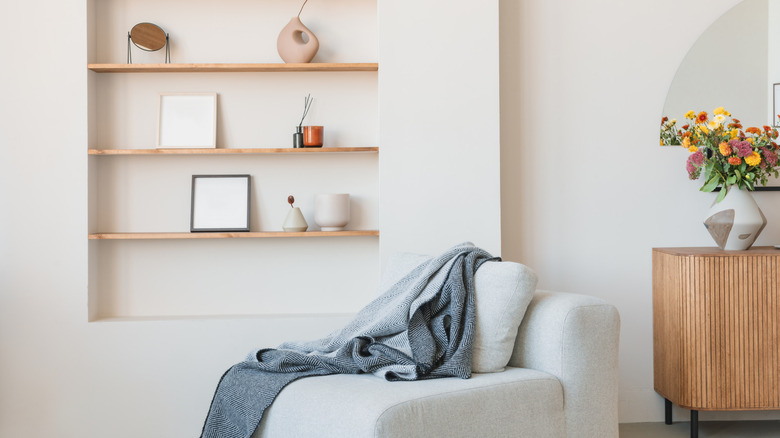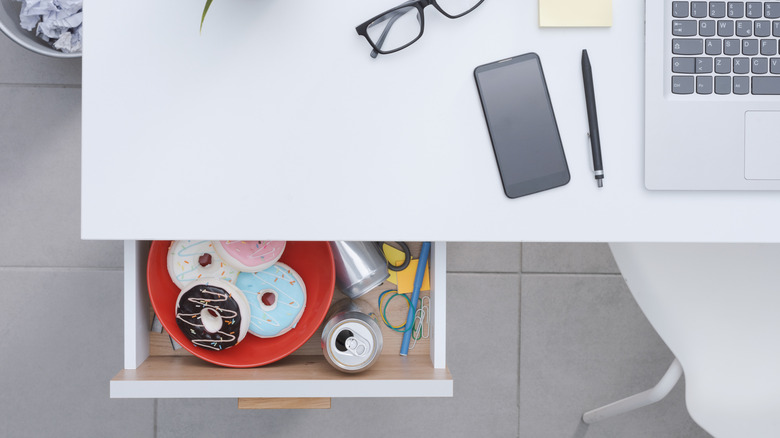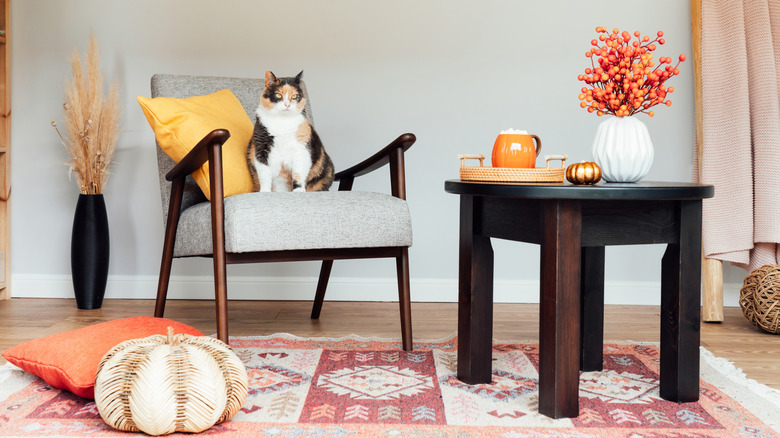The Golden Rule To Follow When Going For A Minimalistic Look
Minimalism may be trending, but if you're cramming your clutter into closets just to keep surfaces spotless, you've already missed the point. Interior designers call this habit "faux minimalism." Rather than reflecting a commitment to intentional living, faux minimalism often reduces the philosophy to a visual motif. The result is a space that looks pared down but still reflects the same patterns of accumulation. A serene space that hides chaos behind closed doors isn't minimalist — it's simply staged.
Interior experts note that much of this confusion stems from the way minimalism was marketed in the late 20th century, as a stark and sterile design style rather than a lifestyle grounded in purpose. This has prompted some in the design world to favor the broader concept of "simplicity," which emphasizes clarity, function, and authenticity over appearances. As a result, what should be a mindful lifestyle becomes just another decorating trend with hidden downsides. While minimalist design can bring calm, it can also backfire when it becomes rigid or impersonal, among other disappointing downsides to embracing minimalist décor. Understanding the difference between visual tidiness and actual simplicity is key to avoiding the trap of faux minimalism.
Clutter isn't gone, it's just out of sight
Faux minimalism often relies on the illusion that hidden clutter doesn't count. But stuffing drawers, cabinets, and under-bed bins with items you don't actually use doesn't align with the minimalist mindset, it just kicks the mess down the road. This approach creates what has been called a "clutter landslide" effect, where the contents of hidden spaces reveal the truth about your habits. If you're buying more storage to accommodate stuff you never use, you're not simplifying, you're just reorganizing.
Some people fake being a minimalist by using concealed storage, such as floating shelves with hidden drawers or lift-up beds, to create clean visuals without downsizing at all. On social media platforms, minimalism can feel more performative than practical with neatly arranged items curated to impress. Real minimalism is rooted in conscious curation. Rather than hide your belongings, challenge yourself to part with common clutter categories: duplicate items, just-in-case supplies, and overly sentimental keepsakes that no longer serve you. Even gentle strategies such as soft decluttering that gradually reduce your possessions without the pressure of a full purge can help realign your space with your values. This shift toward mindful subtraction makes minimalism both more functional and sustainable in practice.
Own less, don't hide more
If there's one principle that separates true minimalism from the faux kind, it's this: Own less, don't hide more. That mindset shift might sound simple, but it fundamentally changes how you approach your home. Instead of buying baskets to tame your belongings, begin by asking if you even need the items in the first place. Many people overlook this basic first step to decluttering, jumping straight to organizing systems without questioning what they're organizing and why.
Research into social media and lifestyle blogs suggests that many people gravitate toward minimalist aesthetics out of a genuine desire for simplicity, but old consumption habits and the pursuit of perfection make sustained lifestyle changes difficult. This tension leads to short-lived decluttering binges motivated more by visual aspirations than values, which rarely resolve the underlying problem. Other design trends, such as eclectic minimalism that brings together the best of both worlds, are emerging as more authentic alternatives, blending intentionality with personal expression and warmth.
Ultimately, real minimalism isn't about showing off how little you own or how sleek your décor is. Rather, it's about designing a life where your surroundings serve your needs, not your image. By focusing on what's useful and meaningful instead of what's photogenic, you create a space that supports your values and your well-being. That's not just a visual style, but a lifestyle shift. One that's less about staging and more about staying true to what really matters.


